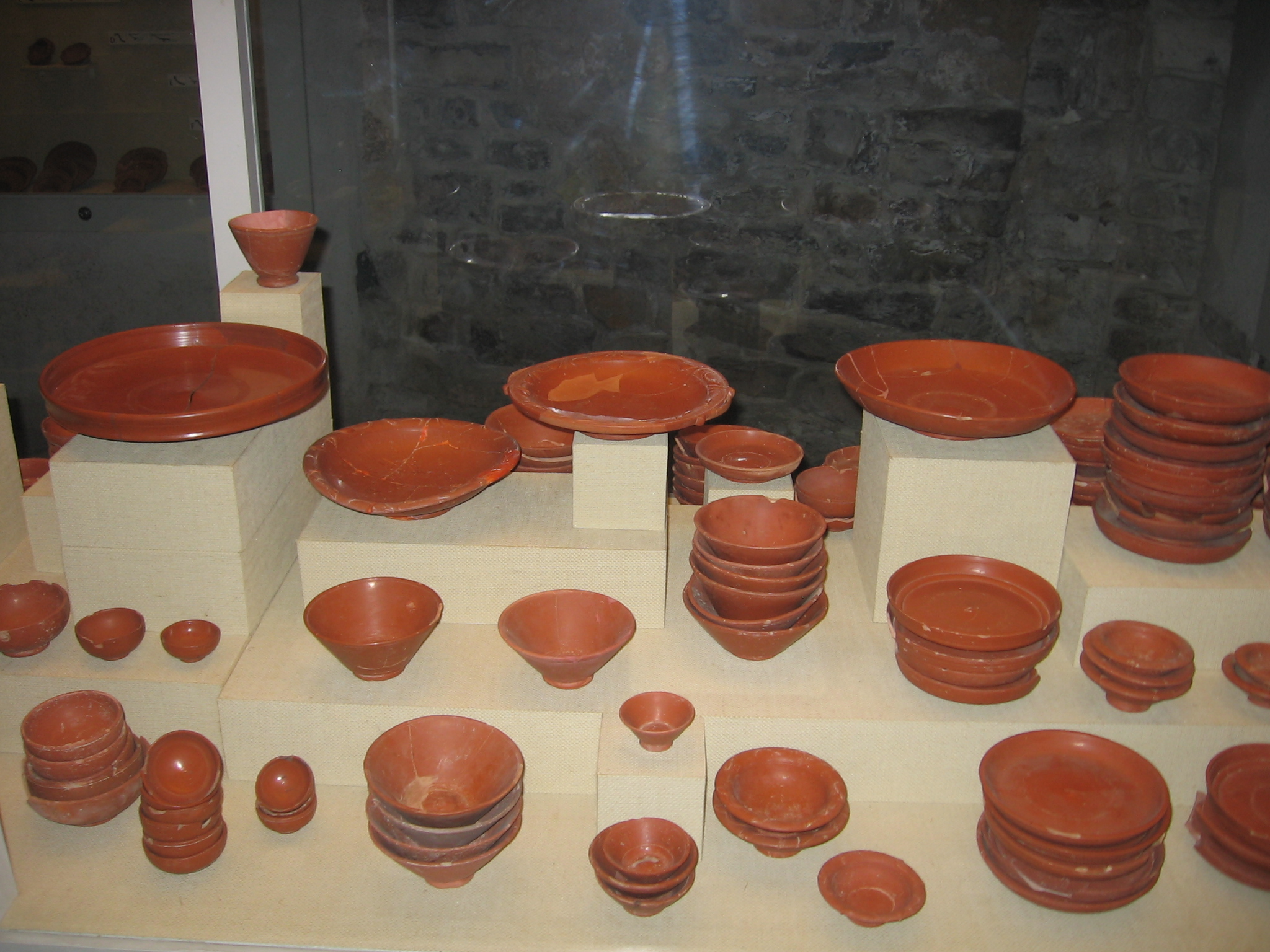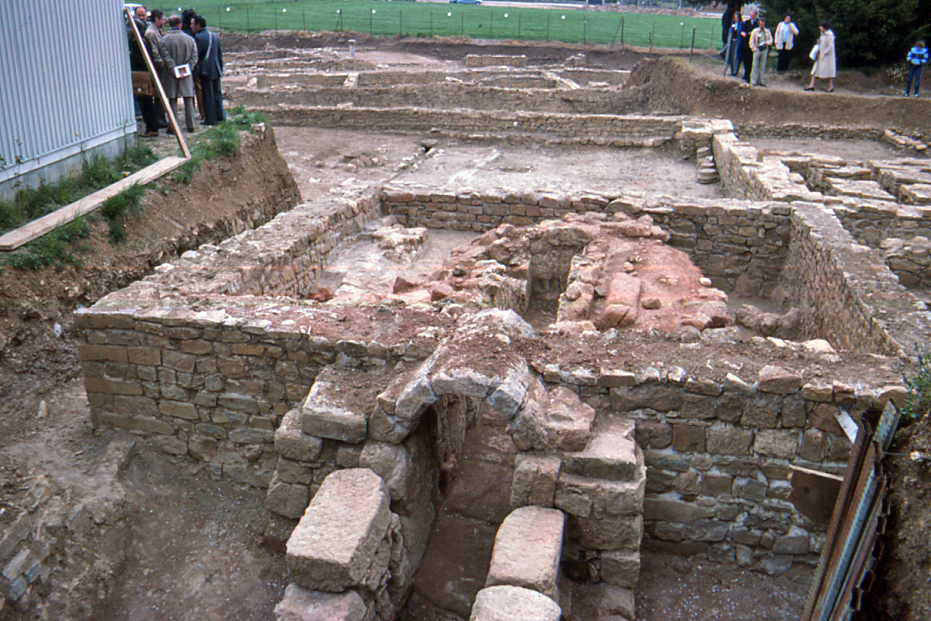la Graufesenque on:
[Wikipedia]
[Google]
[Amazon]

 La Graufesenque is an archaeological site 2 km from
La Graufesenque is an archaeological site 2 km from
La Graufesenque
- official site *
Distribution of La Graufesenque terra sigillata in Roman Britain
(in French, with photo)
(in French, with photos) {{authority control Museums of ancient Rome in France Museums in Aveyron Roman sites in France Monuments historiques of Aveyron Buildings and structures in Aveyron Former populated places in France Geography of Aveyron Ancient Roman pottery Tourist attractions in Aveyron Ruteni
 La Graufesenque is an archaeological site 2 km from
La Graufesenque is an archaeological site 2 km from Millau
Millau (; oc, Milhau ) is a commune in the Aveyron department in the Occitanie region in Southern France. One of two subprefectures in Aveyron alongside Villefranche-de-Rouergue, it is located to the southeast of the prefecture, Rodez. W ...
, Aveyron
Aveyron (; oc, Avairon; ) is a department in the region of Occitania, Southern France. It was named after the river Aveyron. Its inhabitants are known as ''Aveyronnais'' (masculine) or ''Aveyronnaises'' (feminine) in French. The inhabitan ...
, France
France (), officially the French Republic ( ), is a country primarily located in Western Europe. It also comprises of Overseas France, overseas regions and territories in the Americas and the Atlantic Ocean, Atlantic, Pacific Ocean, Pac ...
, at the confluence
In geography, a confluence (also: ''conflux'') occurs where two or more flowing bodies of water join to form a single channel. A confluence can occur in several configurations: at the point where a tributary joins a larger river (main stem); o ...
of the rivers Tarn and Dourbie. As Condatomagus (market of the confluent), it was famous in the Gallo-Roman
Gallo-Roman culture was a consequence of the Romanization of Gauls under the rule of the Roman Empire. It was characterized by the Gaulish adoption or adaptation of Roman culture, language, morals and way of life in a uniquely Gaulish context ...
period for the production of high quality dark red terra sigillata Roman pottery
Pottery was produced in enormous quantities in ancient Rome, mostly for utilitarian purposes. It is found all over the former Roman Empire and beyond. Monte Testaccio is a huge waste mound in Rome made almost entirely of broken amphorae used for ...
, which was made in vast quantities and exported over much of the western part of the Roman Empire
The Roman Empire ( la, Imperium Romanum ; grc-gre, Βασιλεία τῶν Ῥωμαίων, Basileía tôn Rhōmaíōn) was the post-Roman Republic, Republican period of ancient Rome. As a polity, it included large territorial holdings aro ...
.
The site, partly owned by the commune and partly private, has been listed by the French Ministry of Culture
The Ministry of Culture (french: Ministère de la Culture) is the ministry of the Government of France in charge of national museums and the . Its goal is to maintain the French identity through the promotion and protection of the arts (visua ...
since 1926. It was classified as a ''monument historique
''Monument historique'' () is a designation given to some national heritage sites in France. It may also refer to the state procedure in France by which National Heritage protection is extended to a building, a specific part of a building, a col ...
'' in 1995.
History
Production of pottery at La Graufesenque started under the reign ofAugustus
Caesar Augustus (born Gaius Octavius; 23 September 63 BC – 19 August AD 14), also known as Octavian, was the first Roman emperor; he reigned from 27 BC until his death in AD 14. He is known for being the founder of the Roman Pr ...
. Production reached a peak in the third quarter of the first century, and declined as a major exporter thereafter. Reduced activity servicing local needs continued until the third century.
The pottery was made from local clay with a red slip and fired in wood burning kiln
A kiln is a thermally insulated chamber, a type of oven, that produces temperatures sufficient to complete some process, such as hardening, drying, or chemical changes. Kilns have been used for millennia to turn objects made from clay int ...
s which could hold up to 40 thousand items. More than six hundred pottery workshops are known to have been in operation, although a few dozen were prominent.
References
Bibliography
* Bémont, C. and Jacob, J.-P. (1986) "La Terre sigillée gallo-romaine. Lieux de production du Haut Empire: implantations, produits, relations". ''Documents d'archéologie française'', 6, Maison des Sciences de l'Homme, Paris. * Bémont, C., Vernhet, A. and Beck, F., (1987) ''La Graufesenque. Village de potiers gallo-romains''. Ministère de la Culture et de la Communication. * Hermet, F. (1934) ''La Graufesenque (Condatomago)''. Librairie Ernest Leroux, Paris. * Marichal, R., (1988) "Les graffites de la Graufesenque". Supplément à Gallia, 47, Éditions du CNRS, Paris.External links
La Graufesenque
- official site *
Distribution of La Graufesenque terra sigillata in Roman Britain
(in French, with photo)
(in French, with photos) {{authority control Museums of ancient Rome in France Museums in Aveyron Roman sites in France Monuments historiques of Aveyron Buildings and structures in Aveyron Former populated places in France Geography of Aveyron Ancient Roman pottery Tourist attractions in Aveyron Ruteni